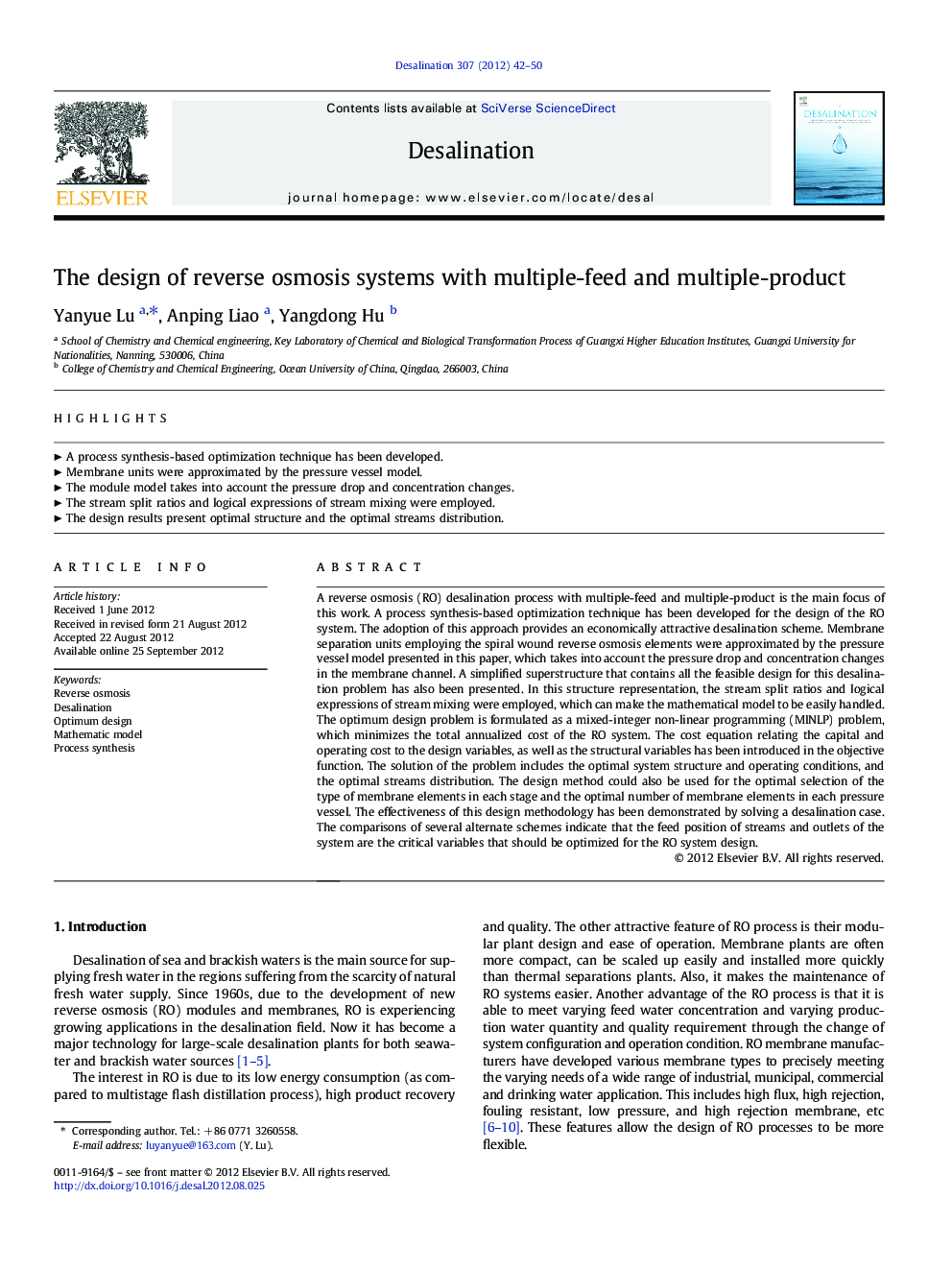| Article ID | Journal | Published Year | Pages | File Type |
|---|---|---|---|---|
| 624203 | Desalination | 2012 | 9 Pages |
A reverse osmosis (RO) desalination process with multiple-feed and multiple-product is the main focus of this work. A process synthesis-based optimization technique has been developed for the design of the RO system. The adoption of this approach provides an economically attractive desalination scheme. Membrane separation units employing the spiral wound reverse osmosis elements were approximated by the pressure vessel model presented in this paper, which takes into account the pressure drop and concentration changes in the membrane channel. A simplified superstructure that contains all the feasible design for this desalination problem has also been presented. In this structure representation, the stream split ratios and logical expressions of stream mixing were employed, which can make the mathematical model to be easily handled. The optimum design problem is formulated as a mixed-integer non-linear programming (MINLP) problem, which minimizes the total annualized cost of the RO system. The cost equation relating the capital and operating cost to the design variables, as well as the structural variables has been introduced in the objective function. The solution of the problem includes the optimal system structure and operating conditions, and the optimal streams distribution. The design method could also be used for the optimal selection of the type of membrane elements in each stage and the optimal number of membrane elements in each pressure vessel. The effectiveness of this design methodology has been demonstrated by solving a desalination case. The comparisons of several alternate schemes indicate that the feed position of streams and outlets of the system are the critical variables that should be optimized for the RO system design.
► A process synthesis-based optimization technique has been developed. ► Membrane units were approximated by the pressure vessel model. ► The module model takes into account the pressure drop and concentration changes. ► The stream split ratios and logical expressions of stream mixing were employed. ► The design results present optimal structure and the optimal streams distribution.
